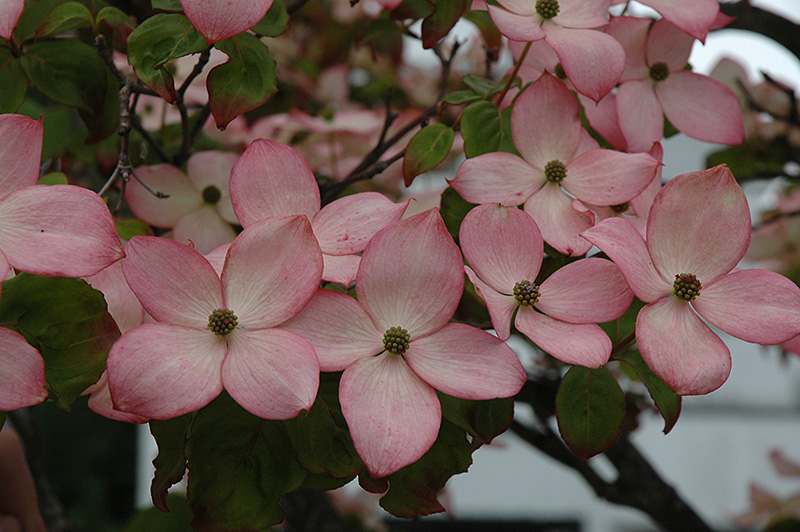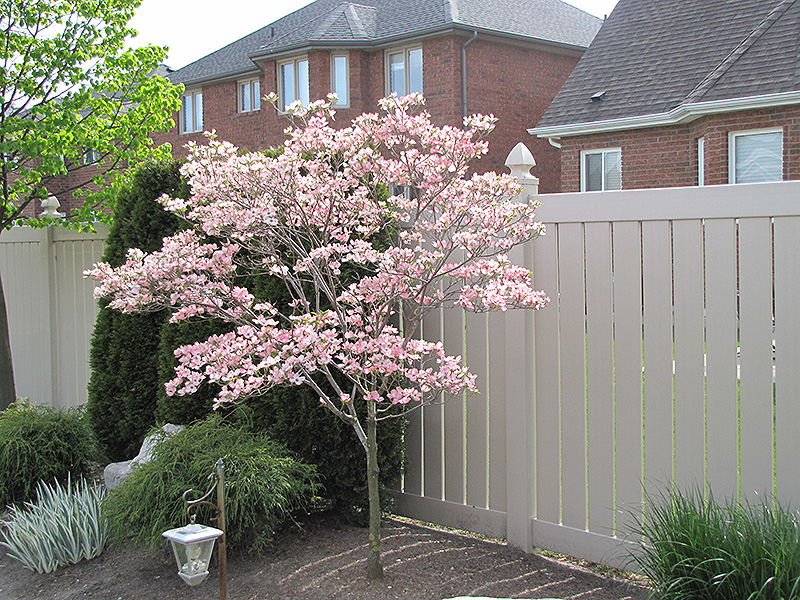Height: 20 feet Spread: 20 feet
Sunlight:
Hardiness Zone: 4b Other Names: Kousa Dogwood Description: A truly beautiful specimen tree for the home landscape, with large, showy deep pink flowers in spring and a strongly horizontal habit of growth; It grows best with protection from the wind & heat, well-drained acidic soil and adequate precipitation. Ornamental Features Dogwood Tree, Satomi features showy clusters of pink flowers with pink bracts held atop the branches from late spring to early summer. It features an abundance of magnificent pink berries from early to mid fall. It has bluish-green deciduous foliage. The pointy leaves turn an outstanding brick red in the fall. The peeling gray bark adds an interesting dimension to the landscape. Landscape Attributes Dogwood Tree, Satomi is a deciduous tree with a stunning habit of growth which features almost oriental horizontally-tiered branches. Its average texture blends into the landscape, but can be balanced by one or two finer or coarser trees or shrubs for an effective composition. This tree will require occasional maintenance and upkeep, and should only be pruned after flowering to avoid removing any of the current season's flowers. It is a good choice for attracting birds to your yard, but is not particularly attractive to deer who tend to leave it alone in favor of tastier treats. It has no significant negative characteristics. Dogwood Tree, Satomi is recommended for the following landscape applications; Planting & Growing Dogwood Tree, Satomi will grow to be about 20 feet tall at maturity, with a spread of 20 feet. It has a high canopy with a typical clearance of 6 feet from the ground, and is suitable for planting under power lines. As it matures, the lower branches of this tree can be strategically removed to create a high enough canopy to support unobstructed human traffic underneath. It grows at a slow rate, and under ideal conditions can be expected to live for 80 years or more. This tree should be grown in a location with partial shade and which is shaded from the hot afternoon sun. It does best in average to evenly moist conditions, but will not tolerate standing water. This plant should be periodically fertilized throughout the active growing season with a specially-formulated acidic fertilizer. It is not particular as to soil type, but has a definite preference for acidic soils, and is subject to chlorosis (yellowing) of the foliage in alkaline soils. It is somewhat tolerant of urban pollution, and will benefit from being planted in a relatively sheltered location. Consider applying a thick mulch around the root zone in both summer and winter to conserve soil moisture and protect it in exposed locations or colder microclimates. This is a selected variety of a species not originally from North America. Special Attributes Dogwood trees are under story trees that grow best in an established neighborhood that provides heat and wind protection from larger trees; it also requires well-drained acidic soils and adequate precipitation.The fruit is approximately 1 to 1 1/2 inch berries turning pinkish red in the fall, generally eaten by birds. All Cornus are classified as nontoxic plants.![]()
![]()
![]()
![]()
![]()
![]()
![]()
![]()
![]()
![]()
![]()
![]()
![]()


